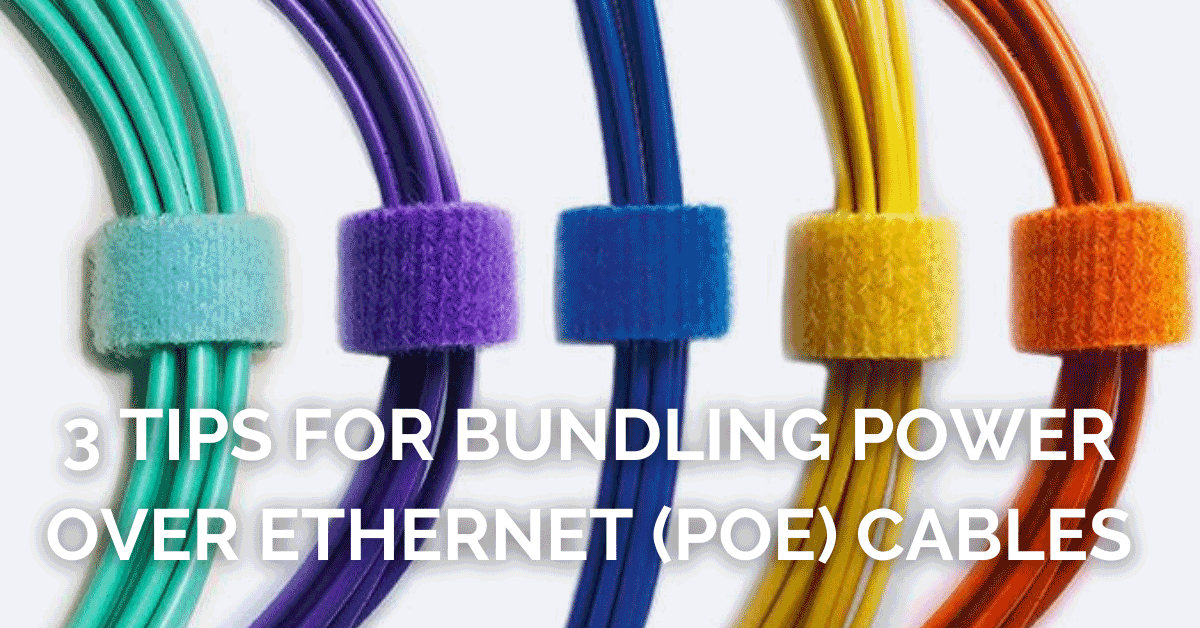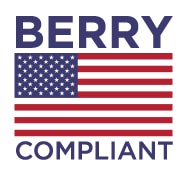3 Tips For Bundling Power Over Ethernet (PoE) Cables
It’s important to understand current best practices for organizing, arranging, and bundling PoE cables because excessive bundle size (excessive heating), over tightened wire ties (cross talk and alien crosstalk), poor quality cable or installation are all contributing factors to network problems.
The technology and capability of power over ethernet (PoE) continues to advance. These smaller dual-purpose low voltage cables are replacing larger more expensive electrical cables to supply and manage a building’s power. Now your entire network cabling infrastructure can be a source of power for many building devices.
In new and updated buildings much of the building’s power is delivered on low-voltage POE cables. PoE can power lighting, security cameras, door access, building automation, phones, and many other devices, while providing network connectivity.
According to Integrated Building Systems (IBS), a helpful resource for cable management specialists, up to “80 percent of corporate network problems — including data errors, slow data transmission, lost files — can result from faulty cabling.” Therefore, it’s important to understand current best practices for organizing, arranging, and bundling PoE cables because excessive bundle size (excessive heating), over tightened wire ties (cross talk and alien crosstalk), poor quality cable or installation are all contributing factors to network problems.
Tip #1: Limit POE bundle size
Many cabling experts recommend limiting PoE bundles to 24 PoE cables, while others suggest they can be larger. A Chatsworth Products article from 2018 concluded that “for an ambient air temperature of 86° Fahrenheit (30° Celsius), Category 5e UTP cable constructed of 24 American Wire Gauge (AWG) conductors and rated for 60°C would be limited to bundle sizes of 38 to 61 cables. So, a bundle of 48 cables from a typical 2U patch panel would not need to be modified, but a larger bundle of 72 cables or 96 cables would need to be broken into smaller bundles.” This kind of management requires spaced bundles within managers, spacers, and pathways in order to control the airflow and minimize heat buildup.
Even the newest, most sophisticated cables can heat up because of resistance and the increased current of the latest PoE standard (IEEE 802.3bt). This can translate into performance problems from an excessive amount of heat transfer. Heat dissipation is now an important consideration when bundling PoE cables in a cable tray or on J hooks. When organizing bundles, it’s important to keep cable bundles to 24 or 48 cables in each bundle.
Tip #2: POE CABLE ORGANIZATION – Organization is key
Using an organized LOW VOLTAGE approach, you’ll have an easier time of updating, repairing, and maintaining the installed network cabling. Through thoughtful planning, color coding techniques, and vertical/horizontal bundling, the entire PoE cable structure becomes accessible to easily manage for years to come.
Using color coding and vertical and horizontal bundling, your cabling infrastructure is strengthened and can easily be maintained by others who weren’t present during the install. By color coding your cables based on purpose, you’ll create an easy visual key for yourself or anyone who needs to update this cabling in the future. This is especially important in hospitals, data centers and other cable rich environments. For example, using blue category cables for all of your PoE lighting, while using gray for all your building automation sensors keeps the cabling plant clean and makes it easier to separate them. For conventional data cables mixed with some running PoE, there shouldn’t be as many issues, because it is very unlikely they would all become PoE sources.
Contact Us for Help with Cable Organization, Identification and Fasteners for Bundling
Tip #3: Use the appropriate cable and materials
Don’t be short sighted when it comes to using the right cable and materials in order to achieve the best PoE bundling practices. IBS mentions that “cheap cabling may save money upfront, but ultimately it will cost more to constantly replace it than it would to buy better cabling upfront.” You should use quality cable, just because a cable may pass a category rating, doesn’t mean it will pass PoE, especially meeting the IEEE 802.3bt standard. Many installations are finding that out the hard way, when they don’t have enough power to run the device at the other end of the cable. Also be sure to use the proper cable specific to its environment (riser/plenum/LSZH).
Plenum Rated Fasteners for bundling PoE Cables include SPEEDWRAP® Brand Fire Retardant Ties, Rolls, and Reels.
These fasteners are made with a combination of Polypropylene Hook and a chemically treated Nylon Loop that slow the material burn, allowing it to meet the criteria of the UL94-V2 Standard.
That same concept applies across the board, to cabling materials and other accessories. Spacers, hook & loop cable ties and other quality bundling equipment mean the difference between a potential issue and a reliable and organized network cabling infrastructure.
As long as you aware of potential problems, plan accordingly, and use the appropriate materials, you’ll find cable bundling success. You can learn more about PoE bundling using hook & loop fasteners through our helpful bundling accessories page.
FOR HELP WITH CABLE MANAGEMENT USING HOOK & LOOP FASTENERS, CONTACT SPEEDTECH TODAY.



